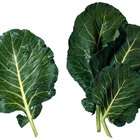
Fresh broccoli has a mild flavor that complements a variety of cooked and raw dishes. Bitterness occurs when the broccoli heads become overripe or when they are cooked improperly. Storing and preparing the broccoli correctly prevents the broccoli heads from becoming bitter, as overcooking brings out the bitter flavor in broccoli. Choosing the freshest possible broccoli ensures the best flavor, regardless of how you intend to prepare and serve it.
Purchase or harvest broccoli with a deep green color and tightly closed florets. Avoid yellowed broccoli and heads that look past their prime. Broccoli becomes more bitter in flavor as it ages and if the florets begin to open.
Store broccoli refrigerated for up to a week before use. Longer storage compromises the flavor and nutritive quality of the vegetable.
Fill a pot with one inch of water. Bring the water to a full boil over medium-high heat.
Place the broccoli in a steamer basket. Set the basket inside the pot and place the lid on the pot.
Steam the broccoli until it's fork tender, or approximately eight to 15 minutes. Overcooking makes the broccoli limp and bitter. Fork tender broccoli is bright green and retains its sweeter flavor.
Related Articles

How to Cook Romanesco Broccoli

How to Freeze Fresh Asparagus

How to Freeze Broccoli
How to Store Your Fresh Cut Kale
How to Clean and Cook Broccoli Rabe

How to Perfectly Cook Broccoli

How to Freeze Fresh Beets

Can I Eat Broccoli's Stem?

How Fast Does Cooked Spaghetti Squash ...

How to Boil Beetroot

How to Steam Cauliflower & Broccoli

How to Steam Broccoli Without Making it ...

How to Know When Asparagus is Spoiled

Steamed or Boiled Cauliflower

How to Freeze Ramps & Wild Leeks
How to Freeze Bok Choy

How to Blanch Okra

How to Blanch Collard Greens

How to Blanch, Peel, & Freeze Whole ...

How to Boil Celery
References
Writer Bio
Jenny Harrington has been a freelance writer since 2006. Her published articles have appeared in various print and online publications. Previously, she owned her own business, selling handmade items online, wholesale and at crafts fairs. Harrington's specialties include small business information, crafting, decorating and gardening.
Photo Credits
Photos.com/PhotoObjects.net/Getty Images